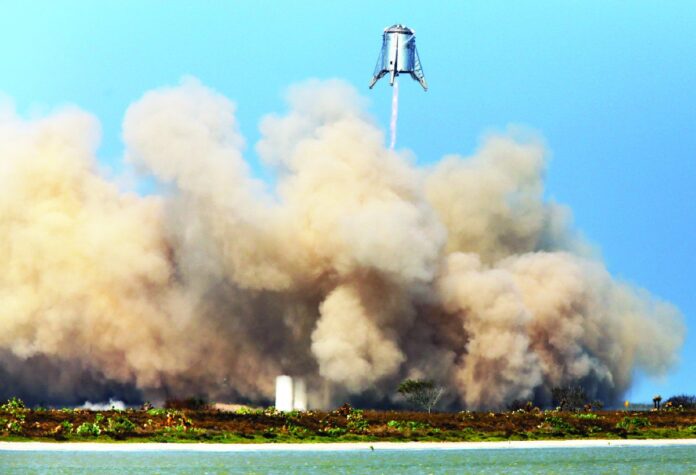
When SpaceX founder and CEO Elon Musk on Sept. 28, 2019, gave an official update of his company’s Starship development program at Boca Chica, SpaceX had successfully launched and landed its first functional Starship prototype, the single-engine Starhopper, only a month before.
Now Musk is giving another Starship update, tweeting last week that it would take place at Boca Chica’s Starbase complex at 8 p.m. on Feb. 10. This time around, the company has a successful high-altitude launch and landing under its belt (the May 5, 2021, flight of full-size Starship prototype SN15) and the six-engine Starship SN20 and its massive, 29-engine Super Heavy BN4 booster on the launch pad being prepared for SpaceX’s first Starship orbital launch.
Musk’s update will stream live on SpaceX’s YouTube channel.
The Federal Aviation Administration said that this month it will release the results of its Programmatic Environmental Assessment of the company’s plans for orbital launch operations at Boca Chica. Dec. 31 was the original deadline for the agency to complete the review, though the FAA announced last year it needed more time because of the high volume of public feedback generated by the Draft PEA released in September.
Feb. 28 is the FAA’s new deadline to release the Final PEA. Based on the review’s findings, the FAA may issue SpaceX a launch license for this first orbital flight, or not issue the license and require a full Environmental Impact Statement to be done before allowing any orbital flights from Boca Chica.
SpaceX plans to launch the 165-foot-tall SN20, fitted with black thermal tiles to protect it during reentry, from Boca Chica but land it in the Pacific Ocean inside the Navy’s Pacific Missile Range Facility about 60 miles north of Kauai, Hawaii. The 230-foot-tall Super Heavy booster would separate from Starship a little over two minutes into the flight and splash down in the Gulf of Mexico about 20 miles offshore if things go according to plan.
Musk, speaking to a joint meeting of the National Academies’ Space Studies Board and Board on Physics and Astronomy in November, tamped down expectations for Starship’s first orbital flight.
“There’s a lot of risk associated with this first launch, so I would not say that it is likely to be successful, but I think we will make a lot of progress,” he said.
Musk also said that “Starship is designed to be a generalized transport mechanism for the greater solar system.”
So far two static-fire tests have been conducted on SN20’s engines, in November and December, and a three-engine static-fire test was conducted on BN4 in July. SpaceX has also erected a 440-foot-tall “launch and catch” tower, as Musk described it via Twitter last month, featuring gigantic robotic arms that will be used to grab subsequent Super Heavy boosters as they land.
Starship and Super Heavy are being developed for rapid reuse in order to lower the enormous cost of space travel. Musk has described it as the “holy grail of space.”
In April NASA awarded SpaceX a $2.9 billion contract to develop Starship as the lunar lander to put U.S. astronauts on the moon again as part of the space agency’s Artemis program. The last man to walk on the moon was Apollo 17 mission commander Eugene Cernan, who did so on Dec. 12, 1972.
As of press time, closures of Boca Chica Beach and State Hwy. 4 from FM 1419 (Oklahoma Avenue) to the beach were scheduled for today through Feb. 10 from 10 a.m. to 10 p.m. each day for SpaceX testing activities.




